




by LUIGI MASCHERONI
“Excellent is the water” is the surprising opening of Pindar’s Olympian Ode, “the most beautiful of all odes” according to Lucian of Samosata. Supreme good. Source of life. The origin of gods and all creatures. Source of all things sacred. Symbol of fertility means of transportation, the foundation of trade, the propeller of industry. Water is the origin of civilisation.
Aqua, aquae, “Clear waters, fresh and sweet”, waters in the Heavens and water underground, water collected in the rounded Etruscan Hydria of the Micali Painter, water from which – as the Qur’an tells us –“we have made every living thing”, fresh water for which new wars will be fought, literature as an ocean of stories, water as violence (Jakarta is sinking into the Ocean: in fifty years’ time it will be submerged and using mask and snorkel will be the only way to visit it) and water as salvation (the SWIM project searching for water under the icy crusts of Jupiter’s moons). The question is: How many waters are there? Here, in this monographic issue, which is a small paper Idropolis, we try to chart some of these waters through La Biennale di Venezia’s own fields of activity (art, architecture, cinema, dance, music, theatre) as well as science, literature, theology...
Luciano Violante reminds us of an ancient and beautiful verb: “adacquare” (to water); Cardinal José Tolentino de Mendonça, Prefect of the Dicastery for Culture and Education, teaches us how to understand the thirst of the world and of the soul through particles and parables; Chiara Ianeselli, art curator, tells us how to collect desert water in a glass; Turkish writer Orhan Pamuk, on the Venice-Istanbul literary route, recalls how as a boy in his country he used to take a sip of seawater “as a greeting”; Carlo Barbante, professor of Analytical Chemistry, tells us about the memory of ice; Moroccan architect
PAROLE DI
Cardinale, Prefetto del Dicastero per la Cultura e l’Educazione
IMMAGINI DI
Francesco Zizola


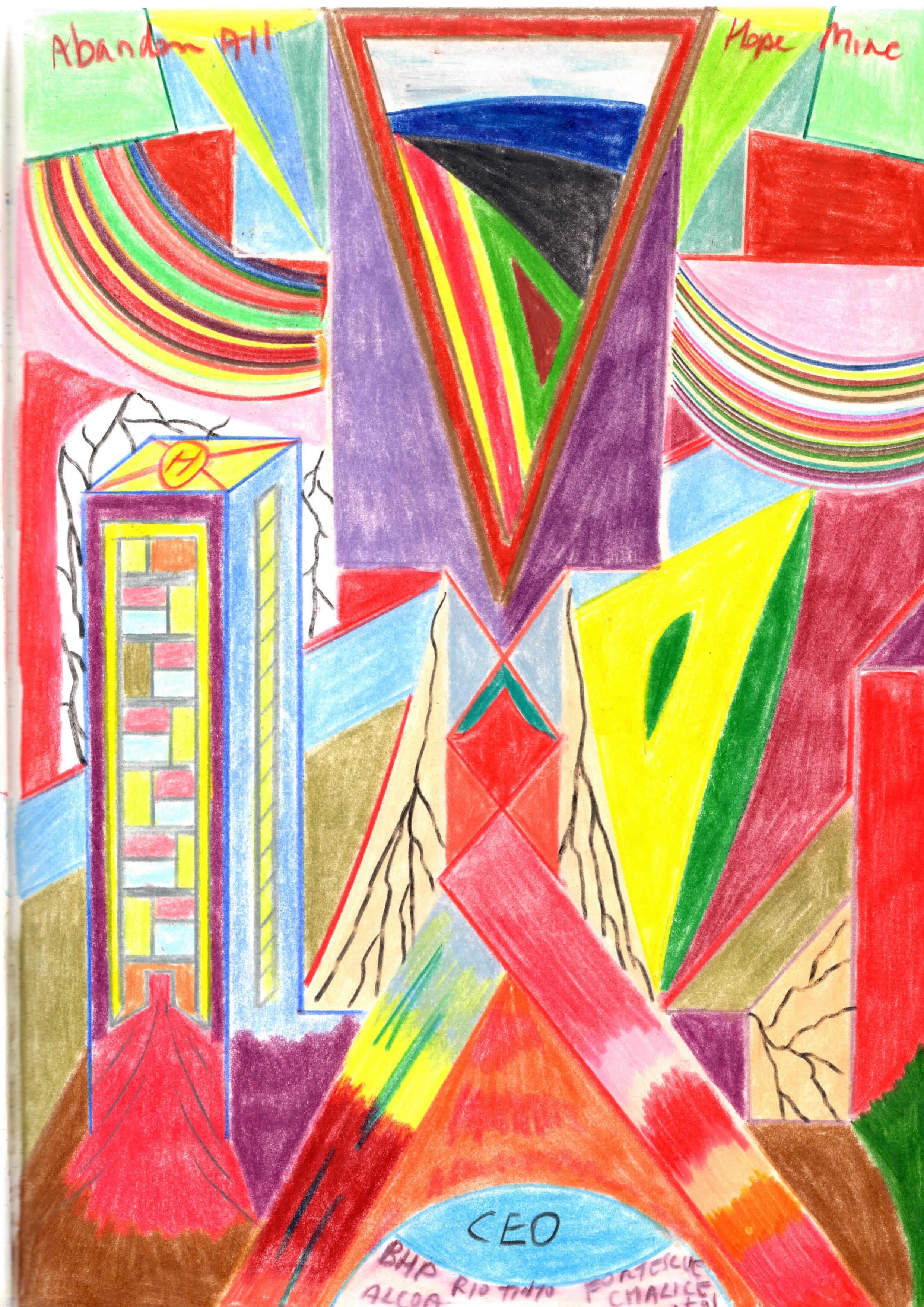
Australia’s most eminent poet and one of the greatest living poets in the English language, John Kinsella lives in a house on the edge of the forest and the adjective that recurs most frequently in his works is “oceanic”. “My poems are the story of drought, deforestation, and water events”
CURATED BY DAVIDE BRULLO, journalist and writer
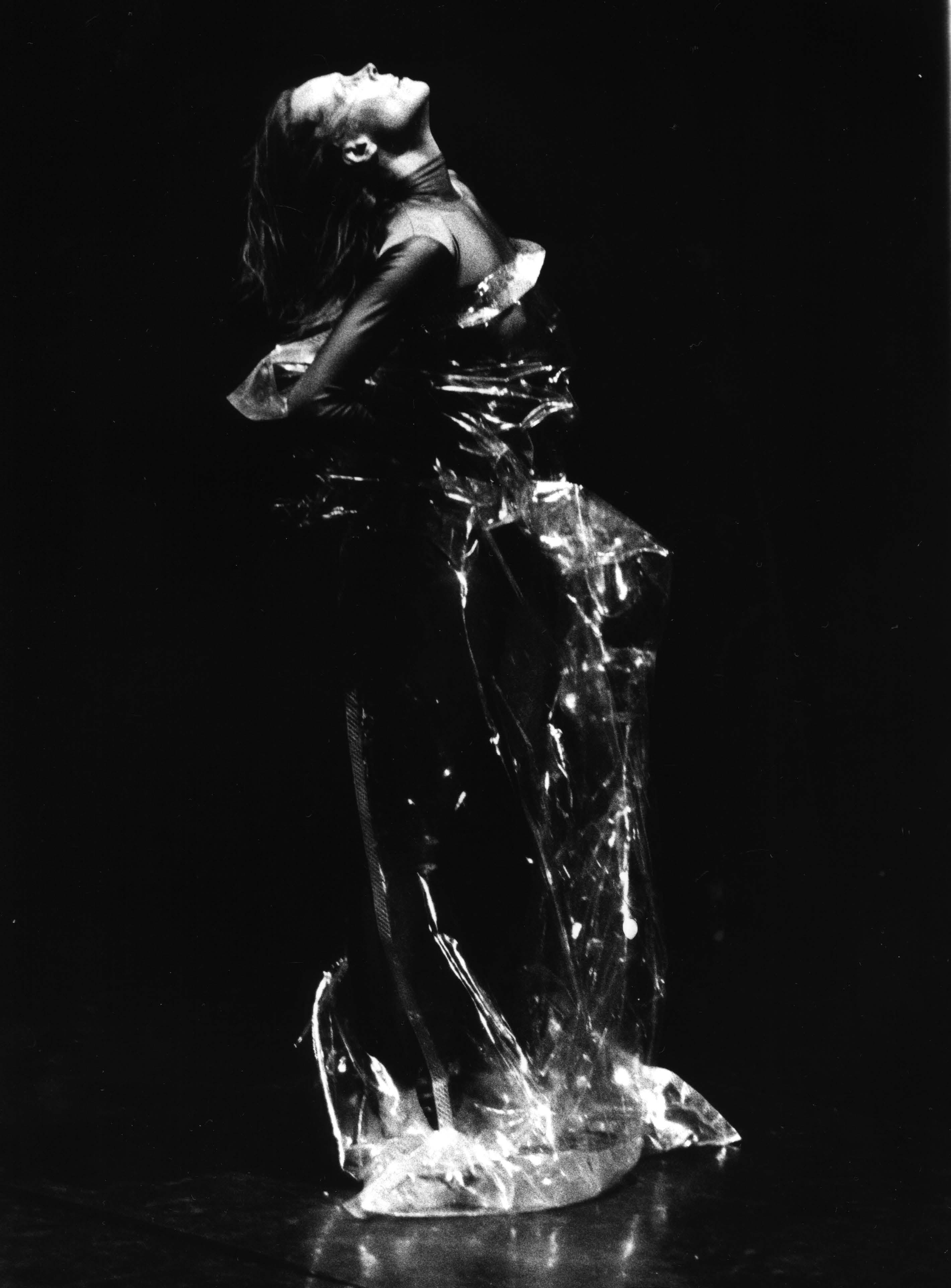
dancer and choreographer
Artistic Director of Biennale Danza 1999-2002
Golden Lion for Lifetime Achievement 2006
The “Water Lady” of the dance world draws on memories, dreams, feelings, emotions, insights and confesses her relationship with a sacred and vital element, indispensable for her art. From the Primordial Ocean to the “city risen from the waters” where images become poetry
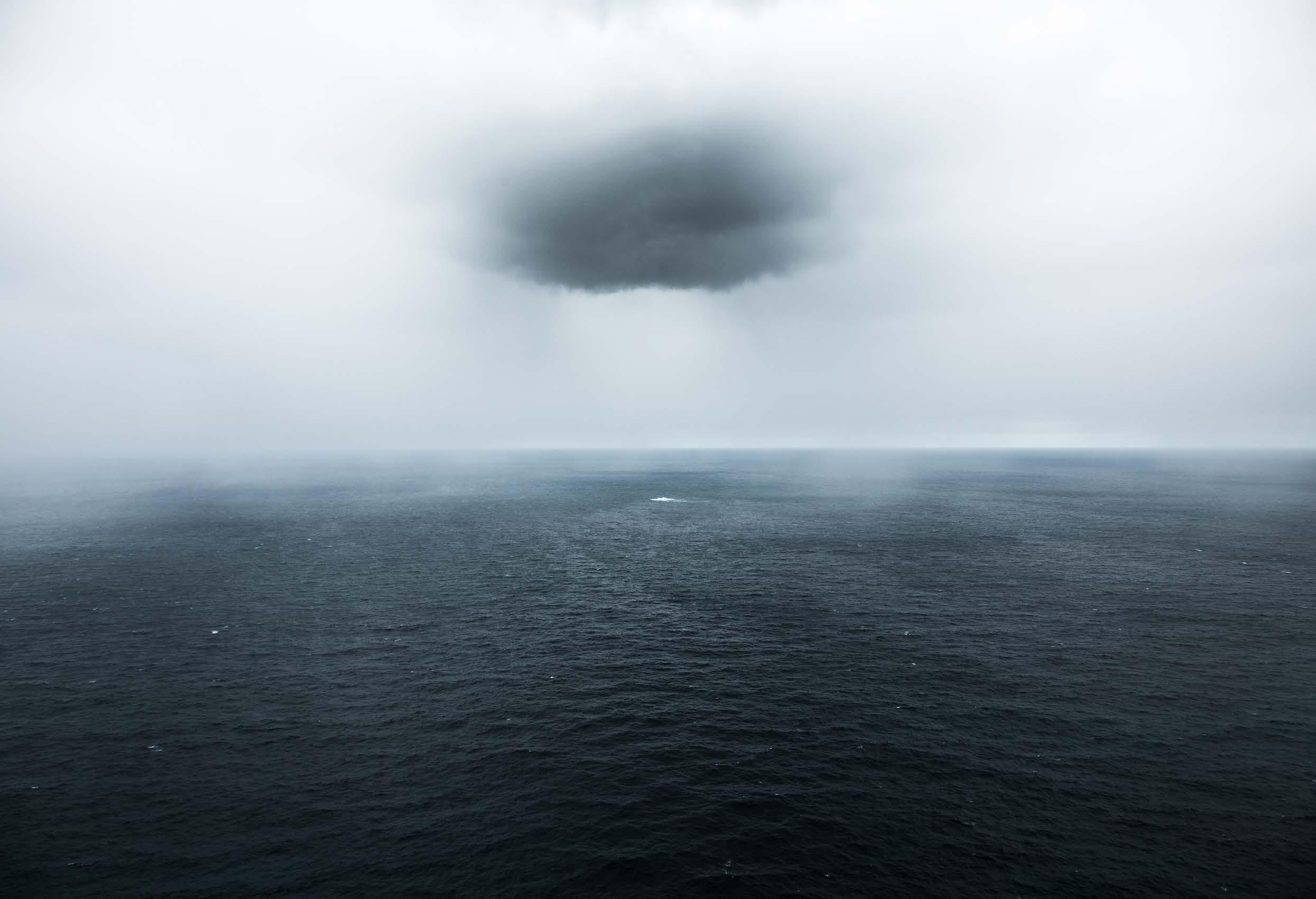

L’enigma e la bellezza del mare “esiguo e domestico” dell’“incantevole Sirena”. E poi i libri di Anna Maria Ortese e Raffaele La Capria, le portaerei in rada degli americani, i tuffi da Palazzo Donn’Anna, i film di Mario Martone e Mappatella Beach…
Meraviglie, come si dice delle cose che lasciano meravigliati, che scombinano il rapporto tra i due elementi maggiori e più visibili da superficie del pianeta, la terra e l’acqua lorem ipsum deinde postquam loberem.


SCOTT OF THE ANTARCTIC is the tragic true story of the British naval captain Robert Falcon Scott, who set off on an expedition to the South Pole in 1912. When he got there, he discovered that the Norwegian explorer Roald Amundsen had beaten him to it to be the first to raise the flag. However, the tragedy only unfolded later, when adverse fate got the better of the British expedition on the return journey.
The film was initially only distributed in the United Kingdom, in 1948, but in September of the following year it received its international preview in the Out of Competition category of the 10th Venice International Film Festival. It marked director Charles Frend’s definitive move into fictional filmmaking, though his work continued to have a powerful documentary feel to it. To play the film’s main characters he assembled a cast that included John Mills, Derek Bond, Harold Warrender, James Robertson Justice and a very young Christopher Lee.

told us that they would publish our article in August, but no one would have read it in August, so we managed to convince them to publish it on 25 July. And we agreed to do an online press conference with the Italian Space Agency. The 25th was a Wednesday. I turned up at the department on Monday, I opened my email, and there were hundreds of requests from journalists who wanted to interview me and Roberto Orosei, who was the first name on that paper! It happened because Science always sends a preview to journalists a few days before publication. We spent the two days before publication answering phone calls and giving interviews, one after the other. It was CNN who asked us, “Why did you discover this and not the Americans, who had the same data at their disposal?” Because we thought about it and they didn’t. What can I say? We were interviewed by newspapers and television channels from Europe, China, all over the world. Some of them asked us, “When did you first realise the water was there?” But there was no specific moment! We actually spent
months and months trying to convince ourselves that what we were seeing wasn’t water, looking for any excuse to call it something else. The idea of it really scared us.
PP: Did you always want to work in the field of space exploration, studying the structural aspects of distant planets?
EP: When I was little, I liked the planets, but I didn’t always dream of doing this, no. It was something that developed at university. In high school, I had an aptitude for science, for mathematics, but I was just good, not brilliant. I started to figure out where I wanted to go with this at the end of university, before my PhD. But in reality even with the PhD and some post-doctoral fellowships abroad, in Canada, the study of planetary interiors was still far away. I was doing other things. I was doing Earth physics. I did a lot of short-term work – physical resonance for the brain, teaching – until a friend from my PhD days told me that the Italian Space
Agency was looking for someone with skills that he thought only I had. And thanks to this contract, at the beginning of the 2000s, I returned to university, to Roma Tre, where I began focusing on planetary physics.
PP: And this has become your occupation, 24 hours a day, every day... Or can a scientist think about other things?
EP: Well... My father was a sports journalist and he got me interested in every sport you can imagine. I played football first of all, and my parents were probably so worried that I was going to stick with it, that they threw me onto a tennis court to stop me playing football. And I played well, I was ranked, but with my physics studies, playing tennis competitively never became an option. But I still play. I go to the gym, I watch the sport, and I practice it. I think tennis also helped me develop one of my strengths: the ability to cut myself off and focus on a problem. That and my stubbornness.
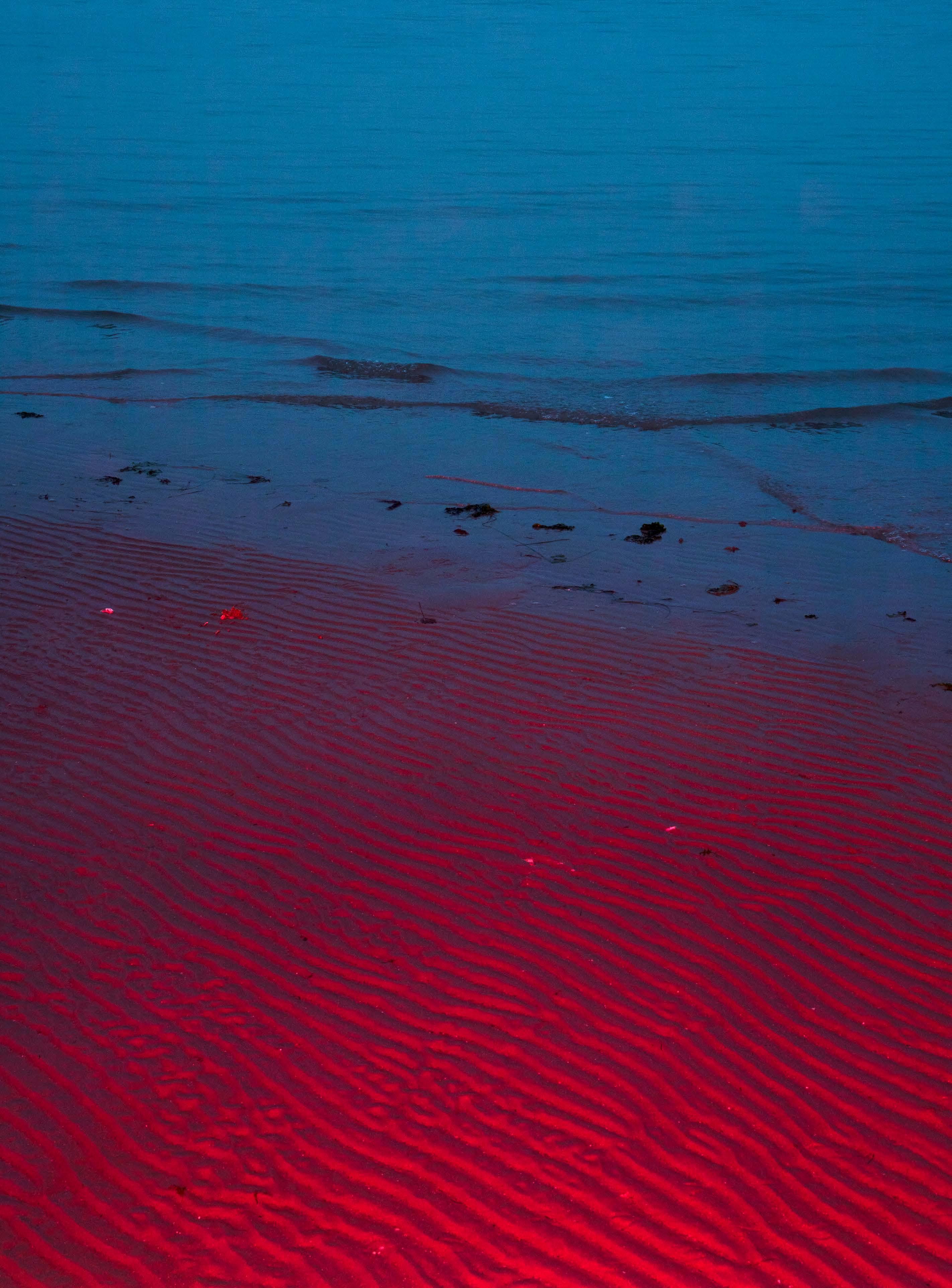

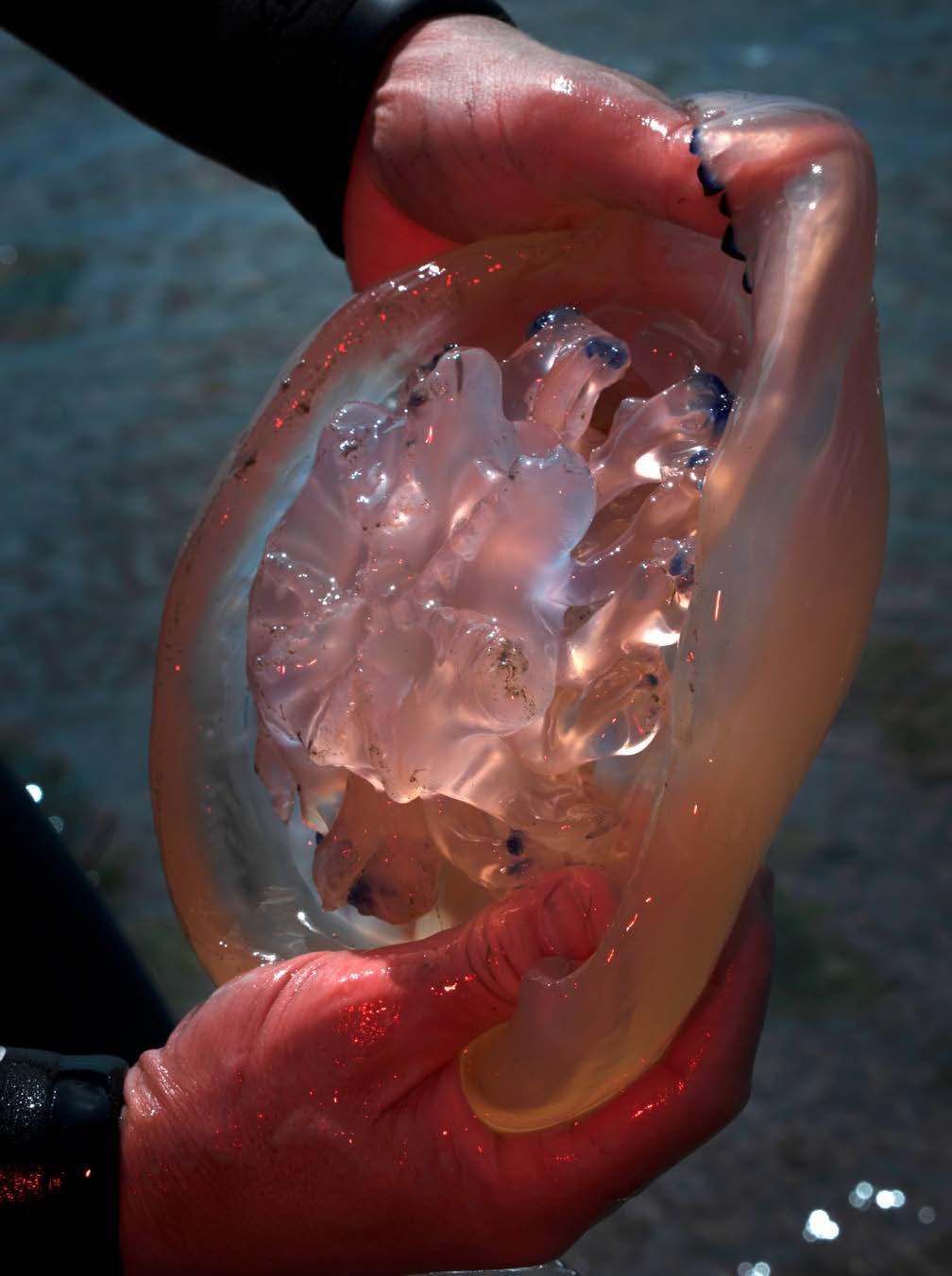
WORDS BY ANDREA RINALDO, engineer and hydrologist, University of Padua, President of the Istituto Veneto di Scienze, Lettere ed Arti, winner of the Stockholm Water Prize
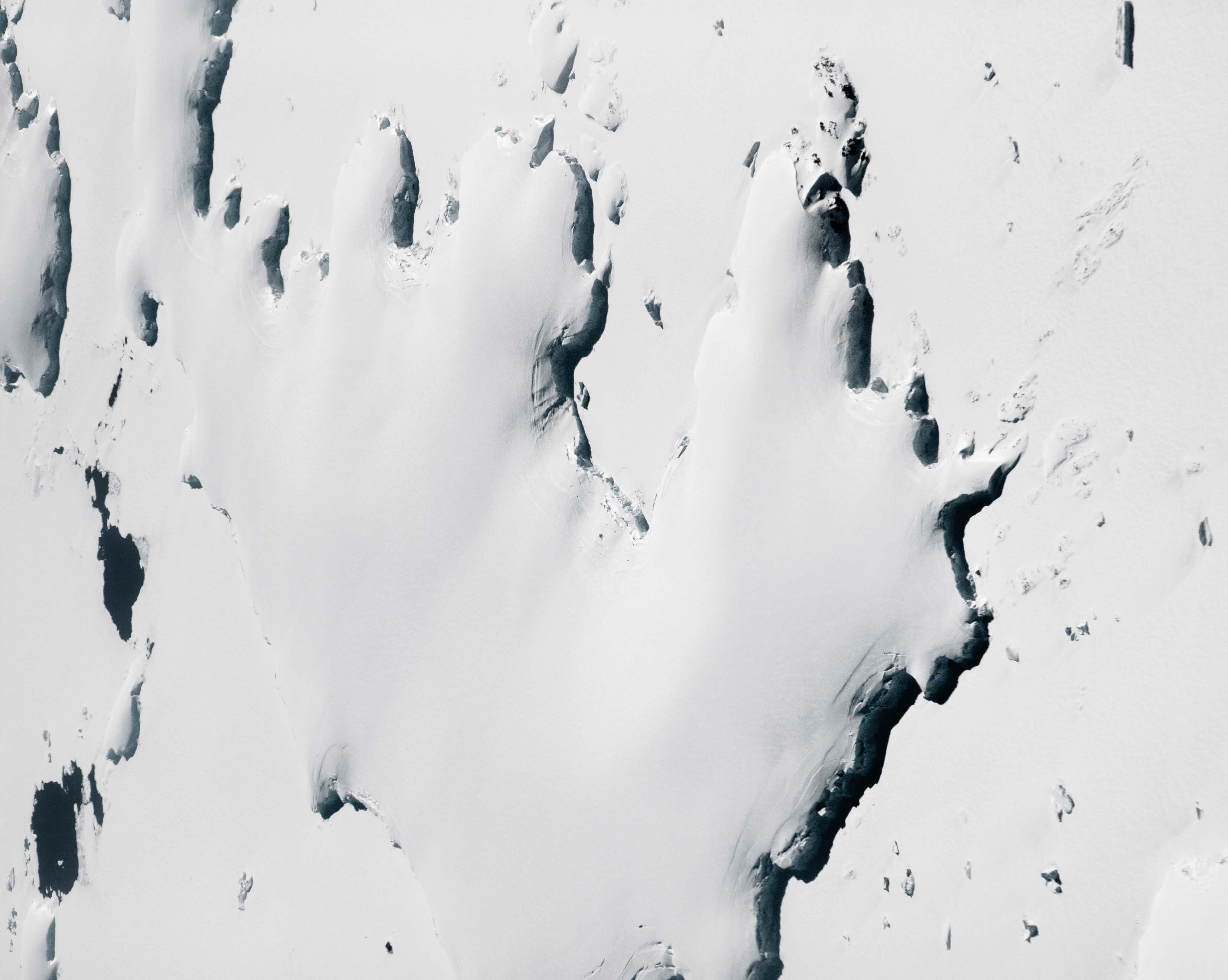

The woods are still criss-crossed by beautiful tracks for horses and riders. A slight climb on packed earth, a short stretch of road, for example from up there to here, is the perfect place for breaking in colts. In their first gallops they are unruly and restive. A well delineated space like this is ideal. My horses are old now.
I still have a mare, a furlan (a type of mountain horse originally from Friuli and still registered in the Annals of the Italian Cavalry at the beginning of the twentieth century), a last residual trace of the Longobards who arrived in these mountains in the second half of the first millennium A.D. As if to say: we’re still here, a poetic trace of a world that is vanishing. You can’t do more than that.
For how much longer will these valleys still be inhabited?
Mountain culture is finished.
Cerreto Alpi 4.40pm
Tabula rasa (Clean Slate)
I will continue to live here, thanking God, until the end of my days. The scrub will continue to grow out of all proportion. Already by next year we won’t be able to see the last few visible metres of river, which is now all but walled up and sealed by vegetation. Those who live in the mountains contemplate the ruins of a world that has reached its end. From a distance the gaze can be reduced to a selfie, eco-green category.
We are now a national park. The norms governing it are reasonable and judicious. Good intentions, fine sentiments. Mabilina, the last shepherdess of Cerreto Alpi, got fined some time before she died for picking flowers that could no longer be picked. She was really upset and offended. She couldn’t understand. They even searched her. And so, the last and only person who, in this valley, still knew how to put together a rare and precious bunch of wild lilies for the feast of John the Baptist, perfect for decorating the altar for the patron saint, inaugurated the new provisions for safeguarding creation. We will die suffocated by an untouchable nature. Lilies protected but unfindable. Saint John forgotten.
Listen to the sound of the Secchia.
The Secchia is a wonderful river. Much bigger than the Canale, but all you can do now is listen to it because it can no longer be seen.
The Secchia rises over there, between those clouds.
PAROLE DI CAROLYN CARLSON Danzatrice e coreografa, direttrice della Biennale Danza 1999-2002, Leone d’Oro alla carriera 2006 P.85
aperta la pioggia spruzza d’acqua la mia pagina. Anticipazioni dell’intenzione che abbozzano flussi di visione.
L’acqua, il nostro elemento sacro alla nascita nel grembo, si evolve in un corpo fatto per il sessanta per cento d’acqua. Miracoli dell’esistenza che diamo per scontati: l’aria che respiriamo, il sole che splende, le acque, i nostri doni trasparenti di sostanza originaria nella famiglia delle cose viventi. Le acque non possono essere separate dai lidi, né dagli alberi nutriti dalle piogge e dalle radici sotterranee che danno vita al nostro pianeta. Tempo e spazio mostrano le sue tracce d’acqua sulla Madre Terra.
L’osservatrice
Vede uno splendido paesaggio Un momento per essere guardata La Natura ti conosce – ti sente Un momento per essere amata Osservando
Che fine ha fatto il miracolo della visione di una notte stellata?
L’arte di andare oltre se stessi…
Ecco: il mio lavoro come poeta della coreografia rivela un arazzo di filamenti che si collegano con la tela dell’Universo. Una servitrice e osservatrice riverente della Natura, i nostri riflessi dello spirito umano nelle nostre forze visibili e invisibili di poesia in movimento con l’acqua, l’aria, la terra e il fuoco. Il fuoco dentro è immaginazione che sboccia, l’Acqua il flusso della Creatività. Questa è la Danza.
Tempo Spazio e Movimento sono la nostra Tela, concetti astratti complici delle Fonti Universali. Il primo principio di tutte le cose è l’ACQUA.
Torrenti che scorrono… fluidità di un corpo in movimento lirico che scivola nello spazio e nel tempo.
Onde in pausa – che rotolano giù… respiro in momenti circolari di inspirazione che sospendono il tempo.
Laghi che scintillano sotto la luce del sole… mani che ondeggiano sopra la testa mentre i fianchi si muovono di lato.
Gocce d’acqua… che ascoltano il tempo in singolari momenti di cambiamento in rapidi gesti.
Cascate d’acqua di ghiaccio gelido… una forma di immobilità verticale, presenza di immobilità
Venti sopra l’acqua… la testa che si inarca avanti e indietro creando archi nello spazio.
Il fondale dell’Oceano… un corpo si tuffa sul pavimento sfiorando la gravità in movimenti profondi
Tracce d’Immagini che creano via d’acqua che scorrono sul nostro pianeta…
FLUSSI D’ACQUA DI CREATIVITÀ
L’acqua è fondamentale nelle mie creazioni coreografiche. Tanto per citarne alcune: Still Waters, Waterborn, Eau, Down by the River, Immersion
lavori si fondano su dichiarazioni ecologiste con immagini che sensibilizzano il pubblico sugli sconvolgimenti della terra e un ritorno alle nostre acque datrici di vita che curano e purificano il nostro pianeta e i nostri corpi.
La danza è una forma d’arte che ha a che fare con il corpo, la mente e il cuore: acque profonde che abbracciano sogni inconsci di mistero, sensualità, bellezza e lucidità in movimento con fiumi, torrenti e mari come fonti spirituali d’ispirazione.
Waterborn, una creazione all’aperto in una grande piscina art déco; una minuscola barca che galleggia con un pescatore, una piattaforma a dodici metri d’altezza con una donna sul bordo con un lungo abito fluente che poi si muove lentamente sull’acqua sottostante, uomini con gonne di plastica nera che agitano onde turbolente che rappresentano l’inquinamento, una figura con cento bottiglie di plastica legate al corpo, signore con tessuti sottili indosso che nuotano nella piscina e stanno per affogare, e la scena finale di Ofelia con il vestito rosso che fluttua sulla superficie mentre un uomo getta fiori sul suo corpo. Una creazione mitologica di bellezza e rivelazioni imperiture.
Eau si apre con un sipario trasparente davanti al palcoscenico come un enorme acquario che rappresenta queste scene:
Acque originarie: sorgenti materne – la prima vita delle cellule, una figura nuda in una piscina circolare che emerge dal cellophane a rappresentare la nascita.
Acque profonde: scene di corpi eterei sott’acqua con respiri di risalita e immersione per ritornare nelle profondità delle notti oscure.
Acque violente: un video con enormi onde che si infrangono – danzatori che eseguono straordinarie prodezze fisiche cadendo e rialzandosi.
Acque sporche: waterboarding – guerre per l’acqua, sopravvivenza in dubbio – i danzatori affrontano le sfide raffigurando immagini scioccanti.
Acque pure: immersioni, rituali del lavaggio delle mani, bagno nei fiumi sacri – purificazioni a significare la presenza di guarigione.
Punti di vista spirituali che vivono su un pianeta dalle conseguenze future ignote. Un Campanello d’allarme per l’umanità…
Le nostre creazioni sono arte di Poesia Visiva compressa in infiniti momenti di Danza come forma d’arte effimera.
UN DIARIO DI VIAGGIO PIENO DI MERAVIGLIE
Esperienze avventurose di incontri… Magici e illuminanti
incontaminati circondati da betulle, una barca pronta per pescare o remare verso un’isola di sassi di granito. La sauna era un evento speciale fatto di quasi 90 gradi di temperatura, sudore e sopravvivenza. Quando i segnali di caldo diventavano insopportabili correvamo nudi a tuffarci nelle acque fresche del lago. Queste esperienze hanno lasciato una traccia indelebile d’inseparabile appartenenza alla natura. Fuoco – acqua – alberi – pietre – sotto il sole di mezzanotte.
Parigi, Incubi ricorrenti in cui sognavo di trovarmi in piedi su una grande roccia con acque sporche che lentamente mi salivano fin sopra la vita. Mi svegliavo nel panico con la paura di essere sommersa. Una premonizione?
Venezia, ingaggiata come coreografa per dirigere la Compagnia di danza contemporanea, Teatrodanza La Fenice. Con grande entusiasmo preparavo i miei progetti per accogliere i danzatori. Il primo giorno di prove attraversavo Piazza San Marco con l’Acqua Alta in piena vista, avevo i miei stivali di pelle bagnati fin sopra le ginocchia e camminavo come una lumaca per raggiungere il Teatro La Fenice. Il sogno premonitore si era avverato e non si è più ripresentato. Pronta ad affrontare il giorno dopo, ho comprato degli stivali di gomma, in stile veneziano classico.
Benvenuta nella Città d’Acqua!
Una mattina di novembre camminavo da sola in una fitta nebbia che copriva San Marco, minuscole goccioline sospese per aria. Il vapore visibile creava gallerie in cui camminavo e svanivo. Statue sfocate appena intraviste, sono entrata nello spazio di tracce evanescenti e ho scoperto il profilo di un leone di pietra sotto veli di foschia. L’orgoglioso simbolo del retaggio di Venezia.
Direttrice Artistica del Settore Danza della Biennale. Il nostro primo lavoro Parabola è stato creato sul palco del Teatro Verde. Era un rischio, perché lo spazio era chiuso da anni. La mia squadra di tecnici ha avuto l’idea geniale di costruire sul palcoscenico piscine rettangolari sommerse d’acqua per le scene di danza e una cascata che si riversava sul golfo mistico. I danzatori erano entusiasti di sperimentare torrenti che cadevano sopra i loro corpi bagnati. Scene di acqua che scorreva, abbracciando segni femminili di sensualità.
Un’altra immagine rivelatrice è quella di quando ci siamo esibiti nel mare fuori dall’Arsenale. Sulle rocce della laguna ho collocato sette donne in abiti stretch aderenti che assomigliavano a eleganti sirene ondeggianti. Per la gioia dei passeggeri i vaporetti che attraversavano la laguna si fermavano ad ammirare questa visione.
ITA Attingo le mie memorabili intuizioni di sogni ed esperienze indimenticabili osservando la Natura in tutte le sue innumerevoli forme di Creazione e Distruzione, mentre da una finestra
Sono nata sotto il segno dei Pesci con ascendente Cancro, quindi forse il mio percorso artistico era destinato a creare opere di qualità onirica di immagini surreali dentro visioni di percezione, emozione, intuizione e introspezione immaginifica. Acqua flusso di creatività…
Consapevoli del cambiamento climatico sull’orlo di fragili conseguenze: le cicatrici della terra per l’inquinamento, la deforestazione, gli incendi, le alluvioni, lo scioglimento dei ghiacciai, l’innalzamento degli oceani, molti dei nostri
California, una bambina ipnotizzata dall’insonne Oceano Pacifico, osserva enormi onde che si infrangono sulla riva con un rumore fragoroso, si dissolvono nella sabbia e nascono e rinascono in movimenti di flusso e riflusso. Ho percepito l’atemporalità come eterna, immaginando che la nostra vita fosse un cerchio senza inizio né fine, solo momenti immortali.
Rivelazioni di un’esperienza mistica che danza con i battiti del cuore dell’oceano, che ascolta il canto della musica della natura.
Finlandia, ho trascorso molte estati con la mia famiglia e i miei amici alloggiando in baite di legno vicino a laghi
Appunti memorabili di una “Water Lady” che converge con una città nata dall’acqua…
Venezia è un eterno anelito d’amore dove l’immagine diventa poesia nata sotto il segno dello Scorpione di morte e rinascita una capsula del tempo preservata in estasi che rivela i suoi segreti nascosti.
Un punto fermo per sognare. Un battito nel cuore della storia di ognuno che scrive il proprio copione.
Come l’Arte è per l’Acqua che Scorre un Grembo in ascolto Un’Anima Oceanica consapevole del proprio pensiero
L’acqua va oltre il linguaggio. Alimenta visioni nelle sorgenti dei misteri dell’immaginazione. La laguna e i canali che bagnano il suo mondo recano l’impronta di Venezia come Opera d’Arte.
La bellezza non può essere fissata – ricordi custoditi in uno scrigno di fotografie e cartoline…
Acque rugginose d’arancione opaco dove i pescatori stracciano le squame argentate dei pesci gettati in mare.
Mutamenti dal cielo carico di nuvole quando il sole ti colpisce negli occhi, il pelo dell’acqua diventa turchese e si abbina agli orecchini che indosso.
Mantenendo le percezioni aperte ai misteri dell’immaginazione penetrante della natura – verso una lacrima di vetro nell’aria immobile.
Dipingere ad acquerello su carta assorbente. Le correnti del Mar Adriatico che schizzano i suoi colori di morbido azzurro e di grigi.
La voce delle acque che sciabordano contro i bordi di pietra mentre a mezzanotte si fa una passeggiata nel silenzio di una città che dorme.
Un labirinto di strade dove ci si perde svanendo nei capolavori di luce cangiante.
La bellezza ascolta – vede – ricorda…
Fare le prove di Blue Lady nello studio al piano superiore del Teatro La Fenice. Da una finestra aperta, ascoltare il suono del remo di una gondola che fende le onde mentre una voce baritonale canta i brani di un’opera – applauso strepitoso.
Mi fermo facendo respiri ammirati.
Scorpioni strisciano su un pavimento in pietra con angeli a rilievo sulle pareti, un lampadario di Murano in alto nel mio piccolo palazzo, mentre all’entrata l’Acqua Alta sale.
Solo a Venezia può accadere questo, da nessun’altra parte.
Uno sguardo di mille miglia dentro l’esistenza…
L’eco di passi sulla pietra che scopre immagini riflesse sulla superficie dello specchio d’acqua.
Facciate e palazzi nobiliari distorti nelle onde, ondulazioni di una danza aggraziata.
Una città sospesa su pali di legno piantati nel fango sott’acqua, un’impresa di ingegneria umana.
Indicatori del livello dell’acqua geniali. Svanirà come Atlantide sommersa dal mare? L’acqua erode la pietra.
Paragono questa domanda a un Artista; Fatica e sudore resistenza e perseveranza vagando alla deriva nel flusso degli insuccessi e del dubbio nuotando controcorrente, risalendo il corso d’acqua. All’improvviso qualcosa arriva dal riflesso dove l’acqua erode la presunzione, l’umiltà aggira gli ostacoli che arrivano all’illuminazione scoprendo idee uniche e originali nei flussi di creatività. Venezia sopravvive.
Un motoscafo sfreccia squarciando il mare calmo, dividendo lo spazio in due. Un lato per i sogni, l’altro per l’amore tagliato a losanghe di onde elettriche. Poeti che tracciano segni d’acqua in un tempo fuori dal tempo cavalcando mari salati.
Disegnare su carta le venature di un arabesco, poesie spontanee su un filo, immagini e poesia che condividono percezioni Universali… Laghi, fiumi e oceani pieni di lacrime cosmiche. Lacrime umane ci offrono intuizioni sulle nostre sofferenze e la melanconia ascolta una voce interiore –
flussi salati di emozione che purificano le erosioni della bellezza, o posso dire l’anima del nostro involucro invisibile.
Questo mi riporta alla meraviglia: Ho letto in una rivista scientifica che l’acqua liquida nel sistema solare al di fuori della Terra è fra venticinque e cinquanta volte il volume dell’acqua sulla Terra. Una pausa per riflettere. Oceani che galleggiano nello spazio! La Terra ruota facendo infiniti movimenti di rivoluzione e noi non cadiamo giù…è senz’altro forza di gravità. Però quando vedi foto dallo spazio, il nostro piccolo pianeta blu è un miracolo da contemplare. Le montagne si sgretolano con l’età, staccano pezzi di polvere cosmica cadente prendendo posto accanto ai fiori. Frammenti di bellezza dal cosmo.
Il poeta Michael Gordon ha scritto: “Quando la Musa arriva non ti dice di scrivere, ti dice di alzarti in piedi un attimo. Devo mostrarti qualcosa. Rimani lì.” Questo momento in cui ho visto l’oceano come tempo eterno. Una porta che ha aperto la Musa come una bambina innocente meravigliata.
I momenti presenti di esperienze inspiegabili che tutti noi conosciamo… Visioni di soli che scintillano sull’acqua, un tramonto che si tuffa nell’orizzonte, un dipinto appeso in un museo mentre rimaniamo incantati, la musica che tocca l’anima, una danza di immagini effimere, un albero solitario sulla cima di una montagna, dolci mattini di campane che suonano in lontananza, un abbraccio d’addio.
Momenti di Presenza e poi tutto sparisce, catturato nei ricordi della Meraviglia. Tempo fuori dal tempo che scorre negli oceani dell’esistenza.
Gli scritti della Natura sono scritti nelle rocce, negli alberi, nell’erba, negli uccelli, negli animali, nei fiumi e nei torrenti. Un riflesso dello spirito umano. Ci sono stati dati molti doni, ma non ne siamo i proprietari, provengono dalle fonti della Natura. Noi siamo gli specchi che viaggiano attraverso l’ignoto. Una passeggiata nella foresta, scomparendo negli spazi dell’Amore e della Gratitudine.
L’Osservatrice
La Natura ti conosce – ti sente Un momento per essere amata Osservando
PARTHENOPE, OR THE WATERS OF NAPLES
WORDS BY FRANCESCO PALMIERI Journalist and writer
IMAGES BY CHIARA ARTURO P.96
ENG When asking and answering qué será? Naples, as Jorge Luis Borges did with Buenos Aires, the image of the sea appears immediately while writing on the keyboard, less banal than irrefutable and different for everyone. For the Naples-born author Giuseppe Marotta, thinking of the city as he wrote in Milan, it could even be contained inside a coffee cup, a miniature of “freshness and light in the hollow of the hand”. For those experiencing the “small and domestic” sea of the city’s waters at close hand, it does not give rise to definitive departures, but extemporary return excursions in the Gulf that delimits it: between Punta Campanella and Monte di Procida, between the silhouette of Capri and Capo Miseno. Some hold it to be a sea that does not bathe Naples, as stated in the title of a book by Anna Maria Ortese. It is a sea of memorable dives and an encounter with the sea bass, a “grey shadow outlined in blue”, that opens Raffaele La Capria’s masterpiece Ferito a morte, the start of a youth characterised by dives
into the sea from Palazzo Donn’Anna, a forbidding building shrouded in legend that waters its foundations in the sea. It was one of the stone icons most widely photographed or painted from the small beach where the talented but unhappy artist Gaetano Esposito set up his easel. He claimed it as his exclusive preserve and drove away all competitors, until a girl who had fallen in love with him in vain committed suicide and he, not long afterwards, did the same by hanging himself. The unpredictable god Anteros punishes with inconstant vendettas the rejections of the heart.
The postcard of the sea is not banal, provided everyone writes their gaze on the reverse side. It was the forbidden sea of the Second World War, heavily mined but almost more beautiful. Then it was the Americans’ sea, occupied by the silhouette of the aircraft carrier lying offshore in the second half of the last century, a symbol for Ermanno Rea of the veto on the magnificent destiny of his magical youthful communism. It was a sea of duels in the 1970s, when cigarette smugglers in their scafi blu (blue crafts) defied the patrol boats of the Financial Guard, a criminal underworld epic brought to life in the films of Mario Merola. Going back into the mists of time, it was the sea of the Arcadian piscatorial eclogues, which spilled over into fragments of legends passed down to the present day. And likewise of the rocky shoreline of the Due Frati in Posillipo, where a story of contested love ended in bloodshed and where the clamour of the protagonists’ ghosts still persists. Of the tavern beneath Palazzo Donn’Anna, where the devil landed to buy the love of a betrothed girl with a sulphurous gold coin. Of the villa where Aleister Crowley, the Great Beast, stayed, and set his novel of dissipated esotericism, Moonchild
The city’s waters were those before which the amorous intrigues of Paisello’s Osteria di Marechiaro played out, where the poet Salvatore Di Giacomo created a fenestrella (window) in the wall for his famous song “Marechiaro” without ever having set foot in the place. To each their own sea, even the infamous Mappatella Beach, where street urchins used to dive into the water from the rocks when they were more sciuscià (shoe-shines) than underworld hoodlums and were periodically blocked by municipal prohibitions on swimming, until, in Nicola Pugliese’s Malacqua, the waters magically rebel against the mayor’s ordinances and rise up to the plateau of the Mount of God to brush against the houses of the removed children.
Qué será Naples? It may be the sea dominated by yacht clubs and demure Belle Époque bathing stations, where the women’s swimsuits even concealed the curves of the cabaret singers much more in evidence on the evening stage of the Salone Margherita; a sea which, according to the journalist and poet Ferdinando Russo, often served as a bath to wash away the powder-covered grime of the femmes
The sea of Naples is real and invented, just like its human animators. The inhabitants of Capodimonte, Arenella and Rione Sanità rarely bathed in it, and almost never learnt to swim. More admired than touched, a reflection in the blue pools of the fish markets at Pignasecca or Borgo Sant’Antonio, or breathed in when the wind was favourable. Air sea. Or a sea violated to build the gigantic steelworks on the shores of Bagnoli, previously a pleasant place for holidays in the city. The sea of the island of Nisida, the location of the TV series Mare fuori (The Sea Beyond) – enchanting but a prison. The stolen sea